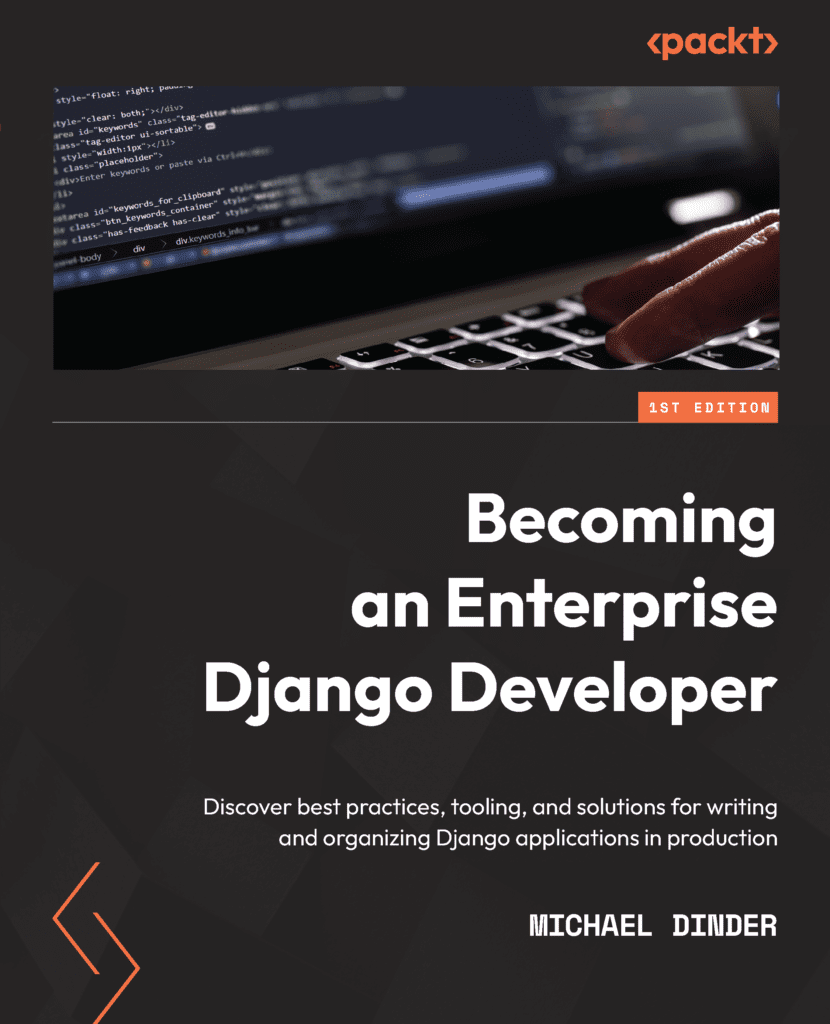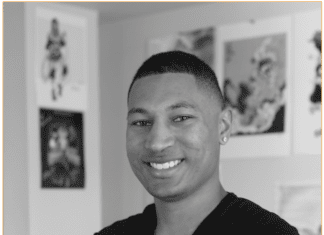Mike Dinder is the author of Becoming an Enterprise Django Developer, we got the chance to sit down and find out more about his experience of writing with Packt.
Q: What are your specialist tech areas?
Mike: Django Web Development
Q: How did you become an author for Packt? Tell us about your journey. What was your motivation for writing this book?
Mike: I was approached by a representative of Packt who asked me if I was interested in sharing my knowledge in the form of a book. I was ecstatic and quickly said yes. I had always thought of writing but I never knew how to even get started. Packt discussed all the details with me and I was more than ready to get started.
Q: What kind of research did you do, and how long did you spend researching before beginning the book?
Mike: I spent countless hours in research mode. I began by interviewing several work colleagues, asking them questions about topics pertaining to Django that would be important to include in a book. I asked them what they found frustrating and what they found especially helpful. I asked some detailed technical questions to get an idea of how advanced a first book should be. I then looked into what books are on the market for Django and compared what topics they included and what topics might have been missing. I carefully drafted an outline that included core topics that are essential to any project and added some topics that maybe were uncommon in other books and the web. Some topics are left out due to their advanced nature, perhaps a second book can help shed some light on the more advanced topics.
Q: Did you face any challenges during the writing process? How did you overcome them?
Mike: A lot of challenges. This was my first book ever, in addition to my first book with this publisher. While the publisher provided a tremendous amount of information and resources to help new authors get started, I still had bumps along the way. It wasn’t until the later chapters were written when I finally got a better understanding of the style guidelines used for technical books through back-and-forth edits of the earlier chapters. Aside of those challenges, I still worked a full-time job and personal responsibilities to take care of. As I usually do, I did feel like I had taken on more than I could handle. As with anyone, I even had a brief moment of just giving up but I learned early on in my life the benefits of to just keep pushing through. I’m glad I did, and I must have had each chapter go back-and-forth several to a dozen times, re-reading the entire chapter each time. That’s a lot of reading and writing. The chapters have changed dramatically from the first draft that has been written and I am very happy with what they turned into today.
Q: What’s your take on the technologies discussed in the book? Where do you see these technologies heading in the future?
Mike: I’ve done research on this subject twice so far and each time the results showed an increased demand for Django as the framework of projects. It continues to grow in popularity and I predict a shift from .NET to Python as the dominate framework in the market. While Django has been around for quite some time already, it has not been very widely known until only recent years. Django itself is still in an early version number, reaching 4.0 only a couple months ago in Dec of 2021. There is still a lot of room to grow in the frameworks own development and there are already big plans for future major version releases. With those changes and continued awareness in the marketplace, I am sure Django will appeal to the majority of the masses in no time at all.
Q: Why should readers choose this book over others already on the market? How would you differentiate your book from its competition?
Mike: This book was custom tailored to create a bare-bones project from beginning to end. It discusses a lot of the extra work that is involved, that goes beyond just coding, to get a real-world project off the ground. It is intended to prepare readers to hit the ground running in new jobs, projects or roles. The book even provides links and resources to guide the reader through more advanced topics that could not fit into just one book and what scenarios they could be used for. While the book discusses the logic behind development styles, it can also be used as a roadmap, guide or quick reference when working on a project.
Q: What are the key takeaways you want readers to come away with from the book?
Mike: To develop great and wonderful things. To build a program that is user-friendly and well optimized to enhance performance.
Q. What advice would you give to readers learning tech? Do you have any top tips?
Mike: To practice, practice, practice! Like a Jedi-Master, repetition and practice makes perfect. The more you code, the more you learn. There are a million ways to program the same thing. Meaning, the code and methodologies discussed throughout the book are not set in stone. It is important to know that you can and should deviate from the code depicted in the book. In doing so, you will learn why things break sometimes, you will learn why something works when you think it wont. You may also learn that something works both ways but one of those ways is more efficient or provides an added benefit in some way. Through those experiences, you will be able to make fine decisions later on. I’ve always said, it would take 2 full lifetimes to learn everything there is about programming, by that time, you will have two more lifetimes of advances in technology to learn as well. There just is not enough time to learn everything and don’t ever let that bring you down or discourage you, instead embrace it!
Q. Do you have a blog that readers can follow?
Mike: You can find me on LinkedIn – https://www.linkedin.com/in/mikedinder/ GitHub – https://github.com/dindermike Stack Overflow – https://stackoverflow.com/users/2793446/mike-dinder
Q. Can you share any blogs, websites and forums to help readers gain a holistic view of the tech they are learning?
Mike: One of my favorites – https://djangogirls.org/en/
Others: https://django.readthedocs.io/en/4.0.x/
https://www.djangoproject.com/community/
https://docs.djangoproject.com/en/4.0/
https://www.tangowithdjango.com/
Q. How would you describe your author’s journey with Packt? Would you recommend Packt to aspiring authors?
Mike: I would indeed. Packt made it really easy from beginning to end. While I had difficulties getting to know their style guides, that was just a learning process. They made it really easy to just focus on the material contained in the book and they took care of everything else from sales, printing, distribution, legal and everything else. Basically all the stuff that I would never have figured out on my own is what they took care of for me.
Q. Do you belong to any tech community groups?
Mike: Stack Overflow – https://stackoverflow.com/users/2793446/mike-dinder GitHub – https://github.com/dindermike
Q. What are your favorite tech journals? How do you keep yourself up to date on tech?
Mike: I sometimes read WIRED, Scientific American, Popular Science, Computer World, Tech Advisor, PC Mag and anything the web introduces to me.
Q. How did you organize, plan, and prioritize your work and write the book?
By jotting down notes on a paper notepad, using a whiteboard, creating hundreds of electronic notepad documents, taking hundreds of screenshots of code I practiced writing, I would start each chapter, with the exception of Chapter 1 and 2, by writing all of the code as exercises that I had planned out. Once that code was working, I then began to write the chapter. As each chapter changed, the code may have changed and as the code changed, the text in the book changed to reflect that. Through each new chapter, some beginning chapters had to change as a result of topics that are linked and mentioned in other chapters.
Q. What is the one writing tip that you found most crucial and would like to share with aspiring authors?
Mike: Test your code always. Put together a good outline but also keep in mind that you cannot predict everything when you are on the outline phase, changes will come as you dive in and start putting it all together. I shuffled a couple of chapters around as a result of tools or concepts that needed to be discussed before the other.
You can find Mike’s book on Amazon by following this link: Please click here








